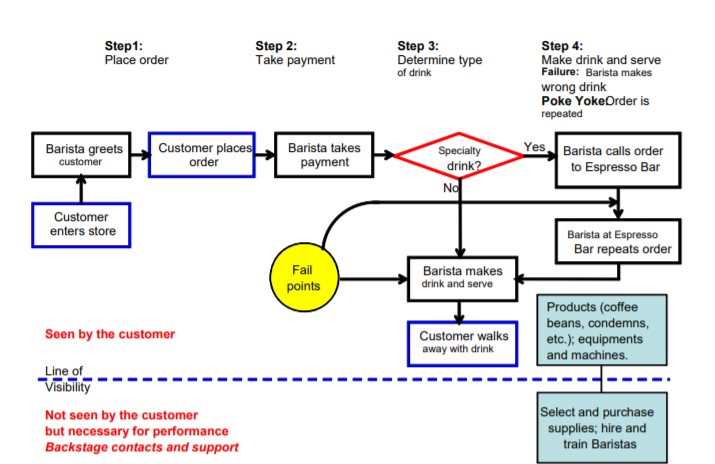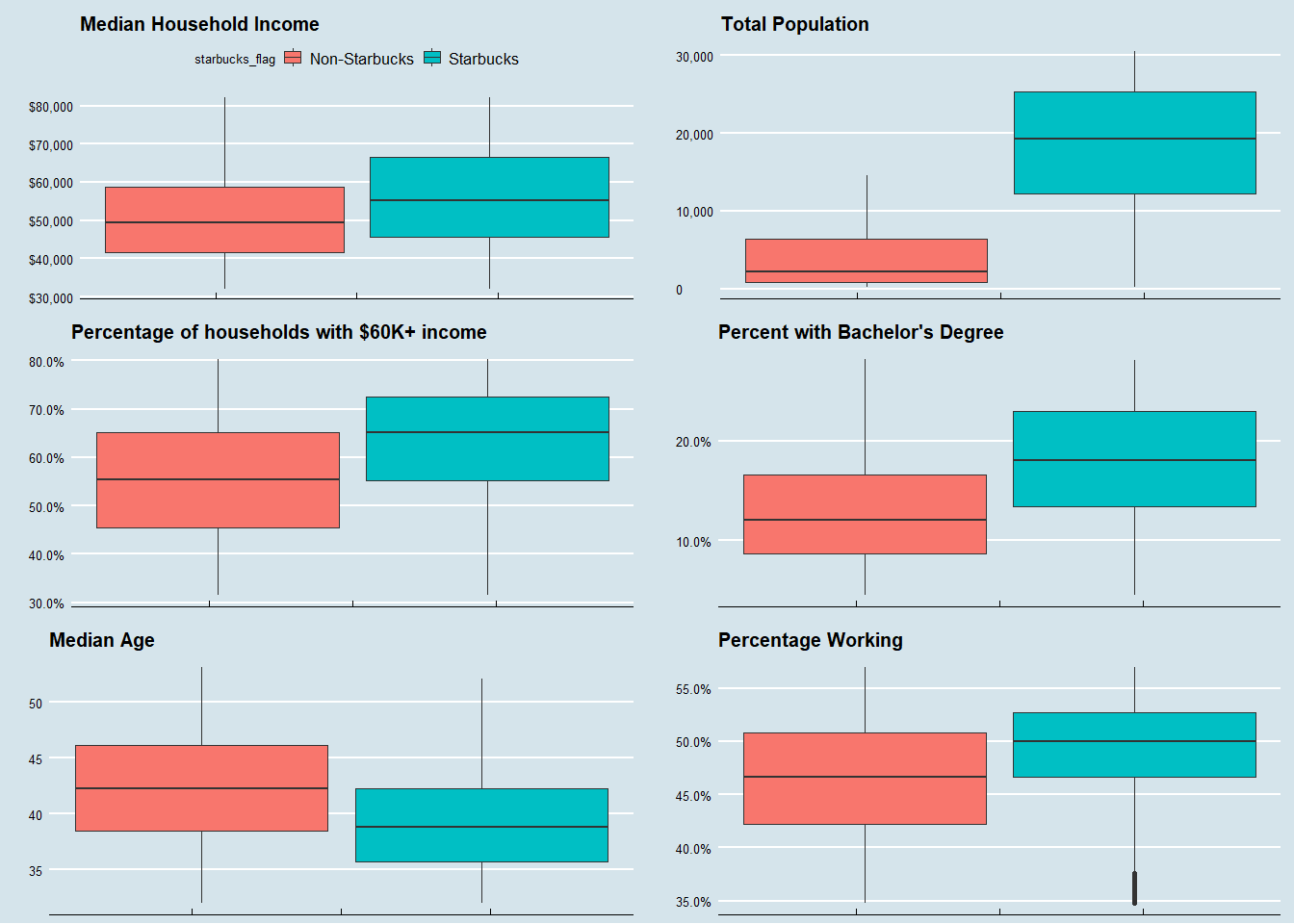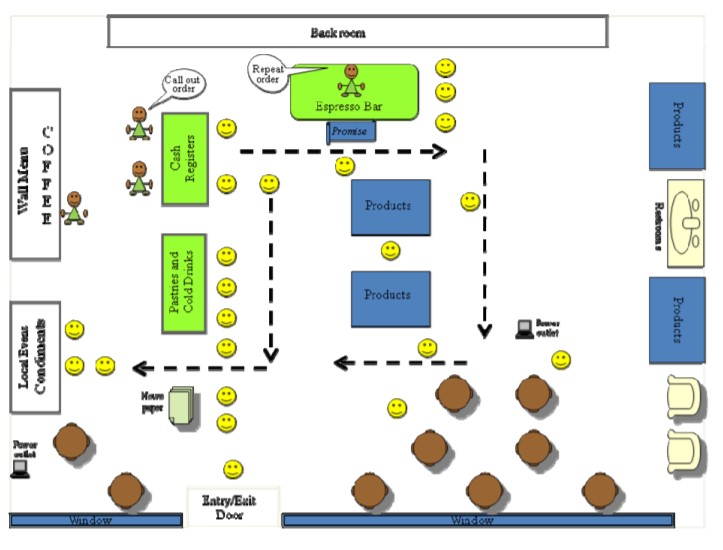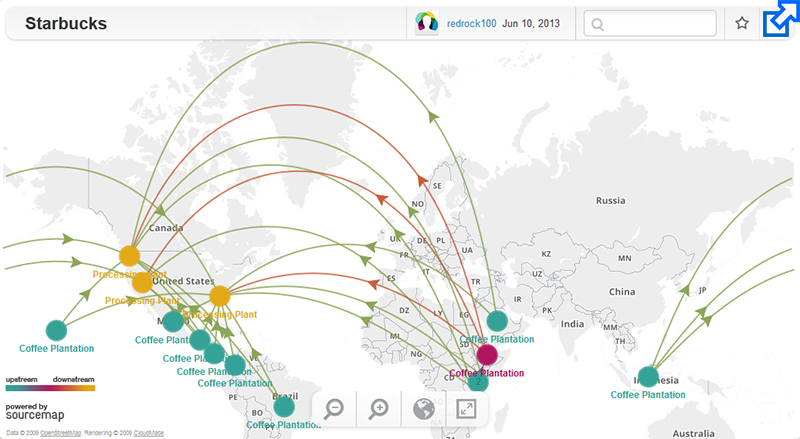Executive Summary
Starbucks is an innovative American company which specializes on selling coffee, primarily through its iconic cafés. Using a vertically integrated supply chain, Starbucks controls its supply chain fully, from working directly with farmers to grow coffee beans and their processing to logistics and distribution to sales to consumers. Starbucks specializes on offering high quality of coffee beans and products alongside a premium customer experience at its stores. It is a combination of a variety of factors including successful supply chain management, processes, as well as direct elements such store locations, layouts and utilization of technology which are discussed in this paper. Starbucks’ supply chain is a model example of value and optimization, streamlined to the maximum and implementing modern technology and processes to ensure that the widespread distribution network allows for delivery of its products. The COVID-19 pandemic has had a negative impact on Starbucks like many businesses in the restaurant industry, but the company has quickly adapted due to the flexibility and adaptability of its business model and supply chain integration, positioning the company for a successful future going forward.
Introduction
Starbucks is a universally known brand, an American coffee and casual dining company which has become synonymous with coffee consumption in the 21st century. Starbucks is based in Seattle, Washington where it opened its first store in 1971. The foundation of Starbucks’ business model is based on selling high quality coffee beans and equipment. However, but the late 1980s, the company under new ownership began to operate cafés alongside sales of beans and equipment. The company rose to prominence exponentially, going public in 1992 and opening stores around the world by 1996. In the 21st century, Starbucks is present in virtually every industrialized country in the world and has become the largest coffee-house chain with approximately 28,000 locations (Starbucks, n.d.). The company is well-known for its modernity, high quality of products, and innovation, both in product offerings and services as well as operational processes and corporate social responsibility.
Design of Good and Service
In modern day, Starbucks has a two-tier business model. The first focuses on the high-quality coffee beans products on which the company was founded. These are sourced directly from farmers and sold under the Starbucks brand, offering a wide variety of flavors and choices. Coffee beans are sold both in retail stores and Starbucks coffeehouse locations. The second and most profitable element of the Starbucks business is its coffeehouse locations where it offers casual dining or takeout for various types of coffee made in-house along with condiments and other foods combined with the service of convenience. In its service model, Starbucks seeks to provide the Starbucks experience as a lifestyle. Starbucks coffee, although expensive, is available to everyone, but has been associated with a certain classes of individuals (young and urban populations) and the coffeehouses have become a common place to conduct both personal and business-related meetings as well as a location for study and creativity in popular culture. Starbucks has adopted a model employed by a few other brands where customers can be comfortable in stores, thus spend more time and indulge in more company products. However, the company is also conscious of busy consumers that may require coffee ‘on-the-go’ and thus offers a robust drive-through and carry out service where consumers can get their coffee without leaving their car (Paryani, 2011).

The company emphasizes a premium design for its products and services, which is its main differentiation strategy that is also reflective in pricing. However, Starbucks carefully monitors that its good and services are representative of the high-end brand image. It maintains a specifically designed quality management system in place that begins with examining sources of its coffee beans, ordering only from farmers that have been certified under its Starbucks Coffee and Farmer Equity (CAFÉ) program for quality. However, it extends to high quality of consumer offerings, product design, and quality of service offered at its coffeehouse locations, crafting a dedicated culture of premium and warmth through employee service and design (Paryani, 2011).
Raw Materials Required
Starbucks understands that the quality of coffee in the consumer products can be affected by issues or mishandling activities in the supply chain, which is the reason why Starbucks largely manages its own supply chain from start to finish (Paryani, 2011). The process begins with coffee farms, which are carefully selected and vetted to meet the company’s large supply needs. For the majority of its coffee products, Starbucks uses Arabica beans, which are considered to be high-quality with rich and acidic flavors but are relatively common and easy to grow.
Starbucks has a well-developed CAFE program in place as it allows the firm to manage various practices and elements such as waste and agrochemical management, workers’ rights, and economic transparency, in line with the company’s stance on CSR and high standards. Starbucks has Farmer Support Centers around the world, close to areas where major partner farms are located, and company agriculture experts work closely with the local farmers to increase the size and quality of the harvest as well as ensuring environmental protection through advanced soil-management and introducing new varieties of disease-resistant trees. Starbucks is committed to providing its suppliers with training and education programs (Starbucks, 2018). This direct interaction with initial growers is rare for a corporation the size of Starbucks, and often contributes to quality as suppliers feel as an integral part of the supply chain. Thus, the supply chain is less susceptible to disruptions and there is competent planning due to close communication, ensuring the correct number of workers and plants are available for harvesting.
Process Analysis
Farmers handpick the beans or use dedicated practices as to not damage the product, and it is shipped to one of Starbucks logistics centers. A test batch of beans from every shipment is verified for quality, but less than 1% commonly fails to meet the quality standards. From there, the beans are shipped to roasting sites. The company maintains only a handful of roasting facilities in comparison to distribution as this allows the company to maintain close control over the process. Starbucks seeks to manage the roasting process carefully to ensure quality and consistency, so that all beans are roasted and packaged in the same way, so that the coffee tastes the same in all of its coffeehouse locations (Sargent, n.d.). Starbucks utilizes a dark roast process for its high-quality coffee beans which differentiates it for the majority of other coffee sellers. Through using dark roast, it is meant to amplify the acidity and premium origin of the beans, although some groups of coffee enthusiasts dislike this. However, dark roasting is significantly more expensive than lighter roasts of the beans, an area where Starbucks cannot easily cut costs.
A significant aspect of the Starbucks experience are its coffeehouses which undergo a significant design process. The company processes are efficient to ensure quick preparation and output of coffee and other products while still maintaining quality. Starbucks optimizes capacity and capacity utilization with processes that meet changes in demand. The company always seeks to maximize cost-effectiveness in its efficient workflows and processes (Paryani, 2011).
Location Strategies
Location is a key element for a global business such as Starbucks. It must consider the locations of its farmers as climate may impact the growth process while trade regulations affect shipping logistics. The company commonly selects farmers close to its biggest regional markets. Starbucks must also consider the locations of its plant facilities and distribution centers. The firm strategically selects locations based on cost structure, short lead time for production, and decreased delivery times for distributions. The United States which is the company’s biggest market and has the largest number of stores, it is competitively beneficial to maintain plants and distribution centers locally despite higher costs. A similar approach is being taken in China going forward, to ensure supply chain viability in expanding markets. Finally, Starbucks must select store locations, which it heavily relies on for technological data and market research. Some locations seemingly have multiple Starbucks stores within a few block radius while other cities only have a few. Starbucks looks at its key demographics which are urban populations, primarily millennials and young adults, college degrees, and median household incomes, which are all factors considering that Starbucks offers premium products, and targets locations with more affluent populations (Bean, 2019).
Layout Strategy

Starbucks approaches the design and layout of its stores with significant dedication, implementing commonplace staples mixed with locally relevant cultures. However, there are numerous elements of its stores that Starbucks utilizes and wants for the experience to remain consistent across the board around the world. Most stores will have the traditional coffee bar and a lounge with traditional warm colors and softness of the palette. However, local elements are incorporated such as types of furniture and seating arrangements (Stinson, 2014). The layout design of the cafés maximizes workflow capabilities while also supporting an atmosphere of friendly ambiance that matches the organizational culture. The focus of Starbucks on the premium customer experience, therefore space utilization is not maximized but rather there is comfort and privacy which allows the company to raise prices as a result (Gregory, 2017). The stores are designed specifically to entice consumers, get them to remain in the store for longer, and to purchase more while there. The company positions advertising in key locations, uses lighting that guides customers through the store, and makes the coffeemaking process largely transparent as most of the machines are in customer’s view behind the counter (Peterson, 2015).

HR Involvement
As a strong customer-oriented business, Starbucks attempts to maintain a strong, cohesive, and friendly culture in the company. It is a powerful element of the business that is reflective in their employees which contribute strongly to the environment in the stores. HR involvement plays a critical role in maintaining this culture as Starbucks invests heavily into developing frontline employee worker training. Furthermore, managers and executives that are hired also undergo significant cultural training in addition to the traditional job requirements. Starbucks values employee performance, maintaining strict measuring and monitoring of employee performance, but also offering numerous benefits, rewards, and better pay than most counterparts in the industry. Starbucks baristas are known to be one of the most skilled employees for casual dining. HR also involves itself in times of crisis, recognizing the errors of the company and making appropriate changes (Leinwand & Davidson, 2016). For example, when a few years ago, a scandal erupted when store managers called the police on a pair of black individuals that were in the store without buying anything, the company implemented mandatory HR training, shutting down stores across the United States for an entire day for that exact purpose. Cultural inclusiveness and appropriate conduct with customers is something that the company takes seriously and seeks to maintain its reputation.
Inventory Management
Starbucks’ inventory management is a carefully monitored process which is closely integrated int the firm’s supply chain. It combines manual record keeping alongside automated tracking. The company’s larger supply hubs typically use automation more comprehensively while local locations track manually based on demand. However, since major reforms in the late 2000’s Starbucks attempts to minimize stockouts and ensuring a continuous supply of coffee beans to the stores, alongside with on-time deliveries. Supply adequacy and automation, with the implementation of scheduling, are the primary aspects of Starbucks’ strategy on inventory management, helping to streamline processes with some elements of flexibility in operations management (Gregory, 2017).
Distribution Process
Upon approval, the beans are shipped to a roasting facility. Starbucks currently has 5 regional facilities in the U.S, two in Europe, and two in Asia, with one recently announced in China. There, the beans are roasted using proprietary processes that optimally extract flavorful oils which provide the well-known and rick aroma, acidity, and flavor to Starbucks coffee. It is also at these facilities that the roasted beans are bagged in either consumer packaging or special Starbucks Reserve packages for its coffeehouses.
The beans are then shipped to a distribution center, some of which are company owned and others are third-party operated. Starbucks has 48 local distribution centers, 33 of which are in the United States. The company makes up to 80,000 deliveries per week globally to its numerous stores, with a significant majority of operating expenses falling on transportation and logistics due to the widespread territory. Starbucks utilizes a hybrid distribution strategy for its products (“Distribution”). The majority of products are sold directly to consumer through company-owned stores as prepared coffee, and in some cases, packaged bags of coffee beans for home preparation.

However, Starbucks also sells products in supermarkets and retail under its brand name packaging, as well as numerous distribution agreements with suppliers such as hotels, airlines, and business offices. Starbucks has recently partnered with beverage giant Nestlé for a multi-billion-dollar deal to distribute and sell Starbucks coffee outside the company stores. The key is to utilize Nestlé’s strong distribution system in place, particularly in markets where Starbucks has not been as successful or simply focuses on its coffeehouses rather than retail products (Kestenbaum, 2018).
Technology Use
Starbucks takes advantage of modern technologies both in its supply chain management and consumer service. The company uses a digital technology system in its supply chain management. The automated IT system monitors demand, inventory capacity, and scheduling in live feedback, adjusting operational and distribution plans. Management tools also take advantage of digital technology to improve efficiency and agility vital to organizational success (Sargent, n.d.). Starbucks understands and demonstrates the relationship between data, technology, and business aspects of the company better than most. In 2008, when Starbucks underwent a significant revamp to both its consumer side business and streamlining supply chains, it was done through data analytics. Starbucks utilized big data to decide store locations, track delivery times, and other aspects which the company capitalized on to optimize processes. Starbucks actively uses artificial intelligence, the internet of things (IoT), and the cloud for a wide variety of business operations such as consumer personalized targeting, insight driven product development across channels, sophisticated long-term planning, dynamic menu creations, and optimized machine maintenance among other capabilities (Rahman, 2020).
Starbucks has been actively using reinforcement learning technology, a system which learns to make decisions in complex, volatile environments based on feedback, both for its supply chain management as well as the consumer Starbucks mobile app. Recently Starbucks have increased the consumer technology aspect but creating more personalized experience on its app as well as introducing highly innovative technologies (Sokolowsky, 2019). Based on blockchain, Starbucks has introduced its ‘bean to cup initiative technology in partnership with Microsoft that also underlies its commitment to transparency and commitment. The technology will essentially allow consumers as well as participants in the supply chain, such as farmers, to track the whole logistics path from where the coffee beans originated to the time when they hit the counters of the coffee chain (Mearian, 2019). Furthermore, Starbucks will expand its technological capabilities in the midst of the pandemic when more individuals rely on digital ordering, with Starbucks taking advantage of its personalization algorithms to drive business
COVID-19
Similar to many other industries and companies that benefit from in-person consumer spending, especially given the experience aspect of the coffeehouse service model, Starbucks was negatively affected by the COVID-19 pandemic and subsequent quarantine. In most locations, it was forced to close the in-dining locations. Although not clear yet, it is likely that the supply chain and logistics have been affected as well. However, Starbucks is known for its innovation and adaptability. It has only lost 5% annual revenue since the beginning of 2020 due to its ability of fast tracking mobile ordering, delivery and pickup services that it has invested in the past few years as a counterpoint to the comfortable locations where people can spend time (Wilson, 2020). It has already shifted its strategy towards this business model that will likely be prevalent for the next years, focused on convenient coffee buying with drive throughs and curbside pick-ups. Starbucks plans to close 400 traditional coffeehouses but open over 300 strictly delivery and pick-up locations this year (Toplin, 2020).
Food supply chains have been among those with the biggest disruptions. However, Starbucks largely relies on non-perishable ingredients and agricultural production is expected to fare relatively well. Starbucks has announced its commitment to work with farmers, particularly expanding its outreach in Asia where coffee farmers are currently under crisis. Despite the pandemic, Starbucks is optimistic on increasing its revenue and operating income in both domestic and international markets by fiscal year 2022, in comparison to pre-pandemic levels (Bajpal, 2020).
Analysis of Operations
Starbucks utilizes one centralized system of supply chain management and logistics across the globe, providing the ability to operate and manage multiple global distribution centers with complete oversight. Furthermore, to increase quality and safety, Starbucks implements a simple scorecard system which consistently evaluate the supply chain efficiency in categories of safety, on-time delivery and order fulfillment rates, end-to-end supply chain costs, and enterprise savings (Matthews, 2015). As evident from this discussion, Starbucks build long-term, mutual relationships with suppliers which it sees as key to its growth and success in providing high quality coffee products. However, the company continues to use strict vetting and monitoring to promote long-term quality while focusing on sustainability as the core of its sourcing and supply chain operation management.
The sheer extent of Starbucks’ supply chain combined with efficiency and sustainability in its operations often makes it a model example of SC management. It is considered by many experts the main reason to the company’s success, even more so than its brilliant marketing for a common beverage. Starbucks utilizes a vertically integrated supply chain, allowing it to control every step of the supply chain processes from the planting of coffee plants to the cup of coffee sold to a consumer at its store. The supply chain is inherently complex, but Starbucks has revamped it into a streamlined, cost-effective, and consistent process based on simple operating structures and metrics, that allows the quality and taste of Starbucks coffee to remain the same, no matter where in the world the beans originated or where a consumer buys the cup of coffee (Sargent, n.d.). It is a vital demonstration of the value chain model in which elements that aid in achieving a competitive advantage are emphasized, meanwhile wasteful activities are eliminated. As more value is created, it is passed to consumers, consolidating a firm’s competitive edge.
References
Bajpal, P. (2020). How Starbucks (SBUX) Is getting itself back on track in China in wake of COVID-19. Nasdaq.
Bean, J. (2019). Analyzing and predicting starbucks’ location strategy.
Choudhury, N. R. (2020). Food Sector Faces Multipronged Consequences of COVID-19 Outbreak. Global Trade.
Distribution. (n.d.).
Gregory, L. (2017). Starbucks coffee’s operations management: 10 decisions, productivity.
Kestenbaum, R. (2018). Nestlé and Starbucks agree to a $7b distribution deal, but will it work in the long term? Forbes.
Leinwand, P., & Davidson, V. (2016). How Starbucks’s culture brings its strategy to life. Harvard Business Review.
Matthews, C. (2015). What can we learn from Starbucks’ supply chain management? Maistro. Web.
Mearian, L. (2019). From coffee bean to cup: Starbucks brews a blockchain-based supply chain with Microsoft. Computer World.
Paryani, K. (2011). Product quality, service reliability and management of operations at Starbucks. International Journal of Engineering, Science and Technology, 3(7), 1-14.
Peterson, H. (2015). 5 ways Starbucks entices you to spend more money. Business Insider.
Rahman, W. (2020). Starbucks isn’t a coffee business — It’s a data tech company.
Sargent, M. (n.d.). Supply chain putting the star in Starbucks.
Sokolowsky, J. (2019). Starbucks turns to technology to brew up a more personal connection with its customers.
Starbucks. (2018). Starbucks farmer support centers.
Starbucks. (n.d.). Company information.
Toplin, J. (2020). Starbucks is closing up to 400 North American stores and replacing them with takeaway-focused locations. Business Insider.
Wilson, M. (2020). Starbucks is about to look a lot different—and COVID-19 is only part of the reason why. Fast Company.